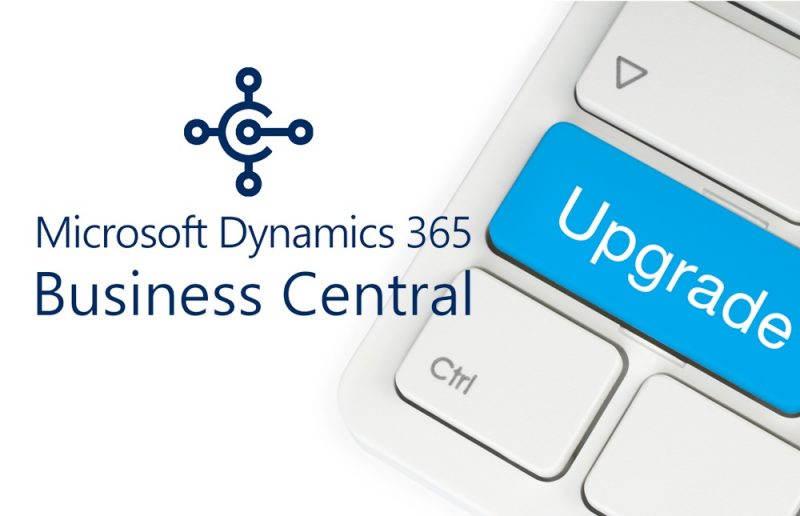Microsoft Dynamics NAV, formerly known as ‘Navision,’ is one of the top small-to-midmarket business management solutions in the world, which is why it now forms the backbone and foundation of the flexible cloud-based SaaS solution, Dynamics 365 Business Central. Dynamics NAV’s universal application framework has enabled companies of all shapes and sizes to mold a solution that fits their business to a tee – and now, with Business Central, you have all that functionality with the additional perks of the cloud.
Seamless integrations, automatic upgrades, mobile access, faster performance, and enhanced reporting cumulate to make Business Central a great opportunity for improving productivity and efficiency across your organization. So how do you ensure that a migration to the next generation Microsoft ERP platform is as easy, cost-effective, and successful as possible?
READ: Pros and Cons of Upgrading: Dynamics NAV vs. Dynamics 365 Business Central
At Clients First, we believe the best business management software systems are implemented by individuals with the right information, tools, and training to apply them effectively. To help you make your journey from Dynamics NAV to Business Central as clear and transparent as possible, we have put together some tips on how to guarantee a successful transition. As with every major technology change in business, it’s essential to get educated and prepare for the transformation ahead.
- Be Aware of Mainstream Support Expiration Dates If you’re on the fence about upgrading to Business Central this year, it’s important to be aware of when mainstream support for your Dynamics NAV version will end. Why? Because Microsoft is ending mainstream support for all Dynamics NAV on-premise systems in 3 years.Mainstream support for NAV 2015 will fall off in April of this year. The last on-premise version of NAV (NAV 2018) will have mainstream support discontinued no later than the Fall of 2023. From there, you will be required to update every 18 months – which can start to cost you a lot of time and money in the long run to maintain.Another important date to remember is April 2020 – your last chance to use Business Central version 14 to simplify the upgrade process. Business Central version 14 still contains the C/SIDE code components that allow Dynamics NAV customers to upgrade to Business Central with their current modification intact. After version 14 discontinues, any upgrades to Business Central will require version 15 licensing and an entire reimplementation and rewrite of modifications in extensions.
- Get Educated on Business Central’s Capabilities One of the ways to guarantee successful software implementation and adoption in a transformation like this is to share some of the excitement with your staff. After using the same ERP system for years and years, many will be resistant to change – so it’s up to you to show your team the new features that they can benefit from, like mobile access or Office 365 integration.It will also be important to communicate that Business Central is built from the Microsoft Dynamics NAV platform, which means it will be familiar from the get-go. From dimensions to the GL account structures, to the UI, users won’t experience the same adoption barriers with a move to Business Central versus another ERP that they may be fearing.When you upgrade to Business Central, you get everything you love about your Dynamics NAV system with a ton of productivity-enhancing features and cloud-based functionality all in one unified business management solution. One solution – not 3 or 4 that you have to open and close all day and manually consolidate data across. Here are some of the big selling features that will appeal to your users:
- Connected data across accounting, sales, purchasing, inventory, and customer transactions
- Consistent user experience across all mobile devices
- Real-time financial performance with unlimited dimensions
- Built-in Power BI dashboards
- Predict stock replenishment and inventory with built-in intelligence
- Seamless Excel integration to customize and share reports
- Accelerate the sales process from quote to cash, all from within Outlook
- Create, manage, and track projects
If you’re looking for more detail on how Business Central works and what exactly is included with a license, download our all-inclusive whitepaper below.
Read: Step into the Future with Microsoft Dynamics 365 Business Central: A Complete Guide
- Review Your Customizations and Business Processes Dynamics NAV is known for its powerful flexibility and unique ability to customize the system to meet specific business and user needs. Unfortunately, every customization developed modifies the original application and makes upgrading (i.e., code rewrites) more time-consuming and costly. Using extensions in Business Central, you can now customize your system without modifying the original application. Microsoft has also made a ton of previous customizations out-of-the-box, so you may be able to retire some of your existing modifications and opt for the base functionality in Business Central.A good place to start is a thorough analysis of your existing customizations and identify what works and what could work better. Business Central is an opportunity to review your current business practices and redesign your processes and systems for improved efficiency.
- Identify Your Migration Strategy Moving from an on-premise solution to a cloud-based SaaS solution can be intimidating. There are two approaches to migrating from Dynamics NAV to Dynamics 365 Business Central: an upgrade or a reimplementation. The migration strategy you choose depends on how far back you are in Dynamics NAV versions in addition to how many customizations and changes to the base configuration of Business Central are required. Clearly, a total reimplementation is going to be more work than an upgrade, but in the end, you will emerge with a scalable cloud ERP that will be automatically updated and supported indefinitely by Microsoft. There is no danger of not getting help, adding functionality, maintaining licenses or compliance with other systems, or stopping imperative business processes because no lifecycle management expirations or restrictions are in place.
- Start Planning Your Upgrade Early Upgrading your on-premise Dynamics NAV system to Dynamics 365 Business Central is a great opportunity to rethink your business processes, update your business practices, and step into the future with mobility, analytics, and collaboration.As with any software implementation or upgrade, it pays to do your due diligence and start planning with an experienced partner. At Clients First, we want to help simplify the entire process. We are offering free Dynamics NAV to Dynamics 365 Business Central planning workshops for any current Dynamics NAV customer interested in upgrading to the Dynamics 365 cloud. In addition to a comprehensive workshop, we will also provide a fixed-fee upgrade proposal with guaranteed pricing! This will give you a better understanding of what’s included in the subscription and what it will take to set up and go live.



